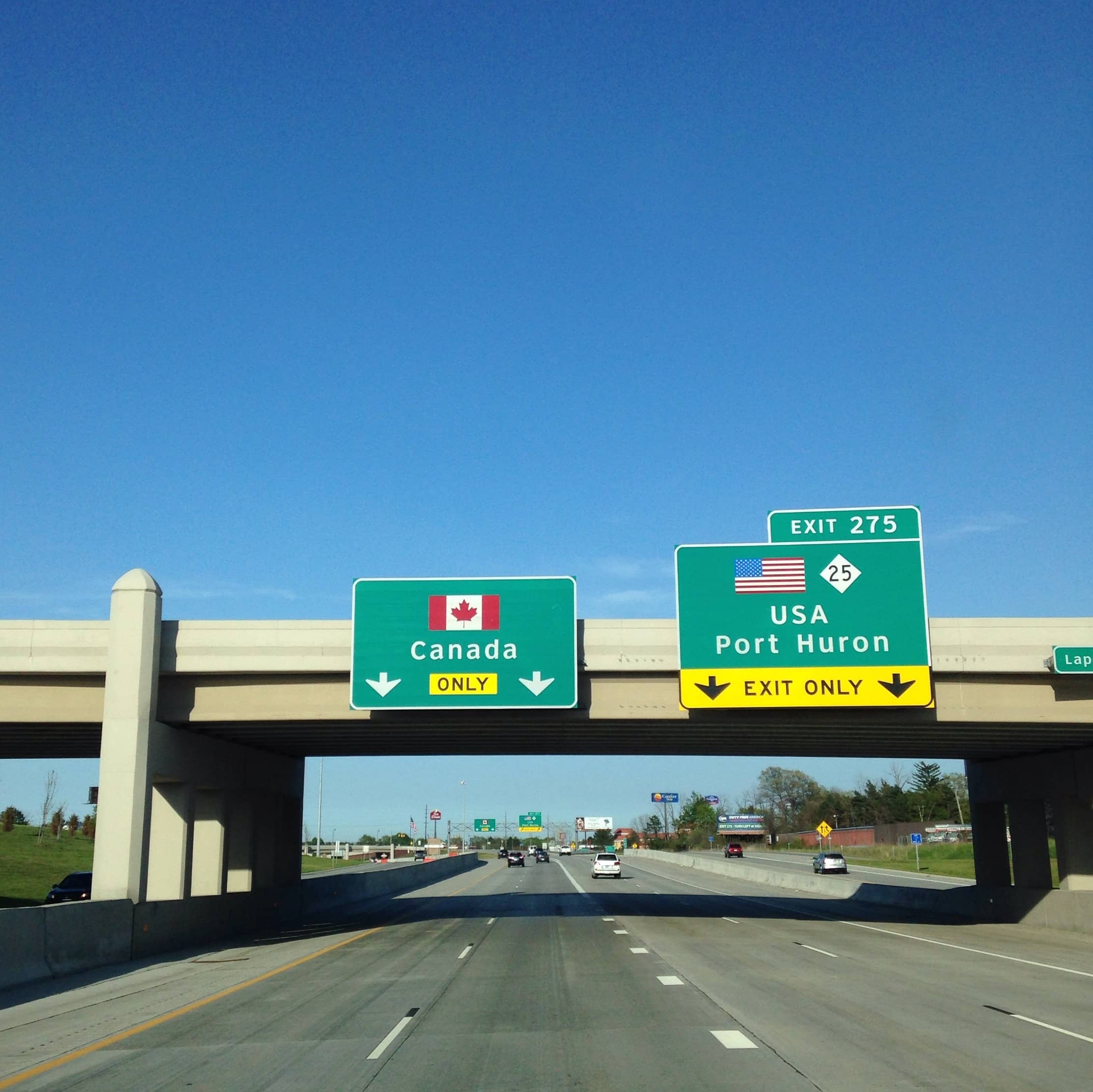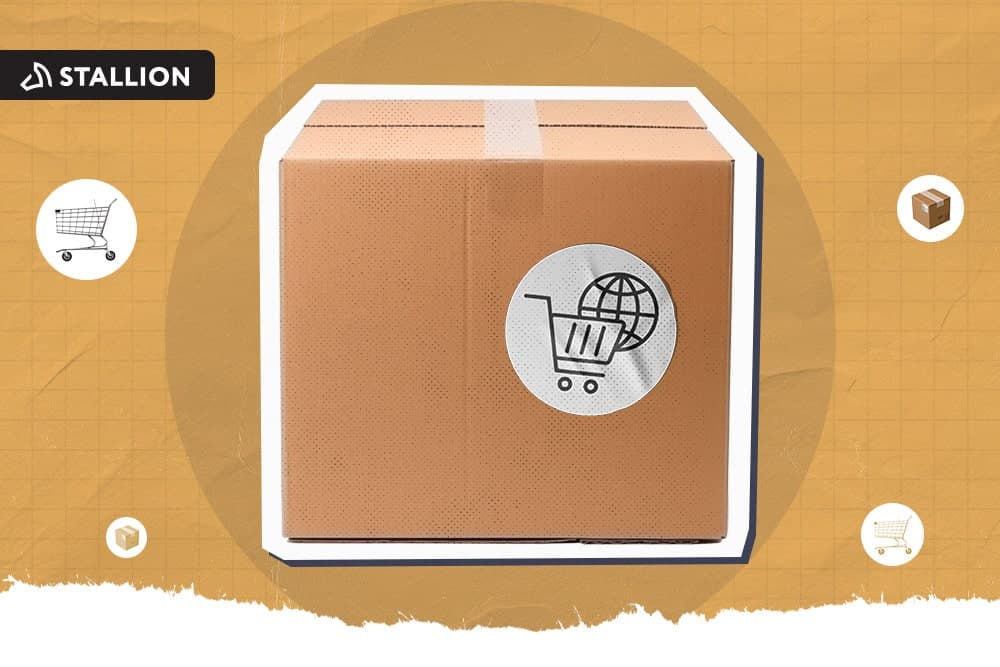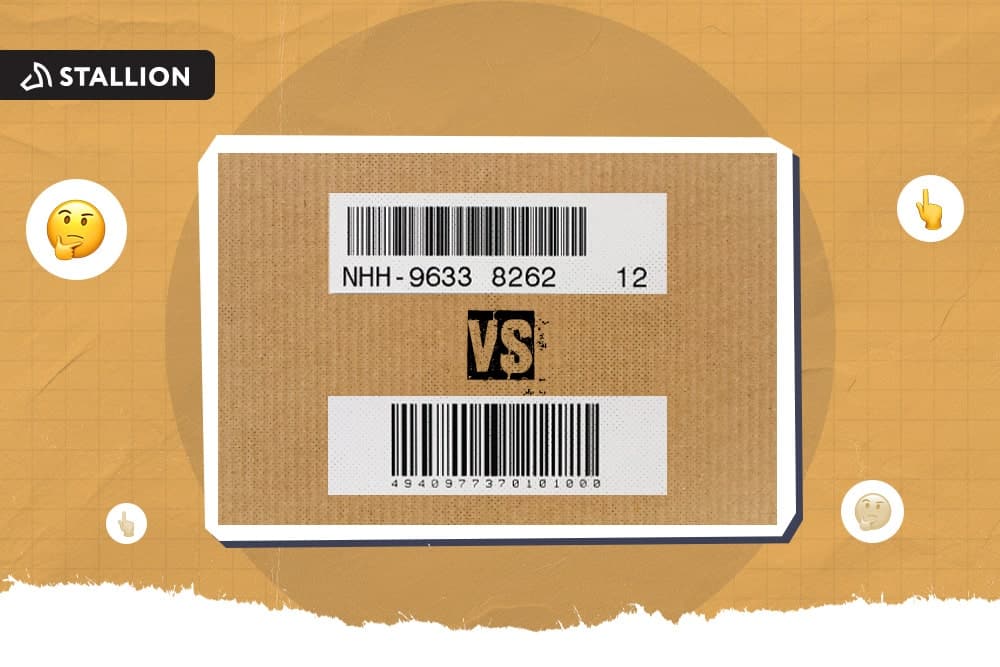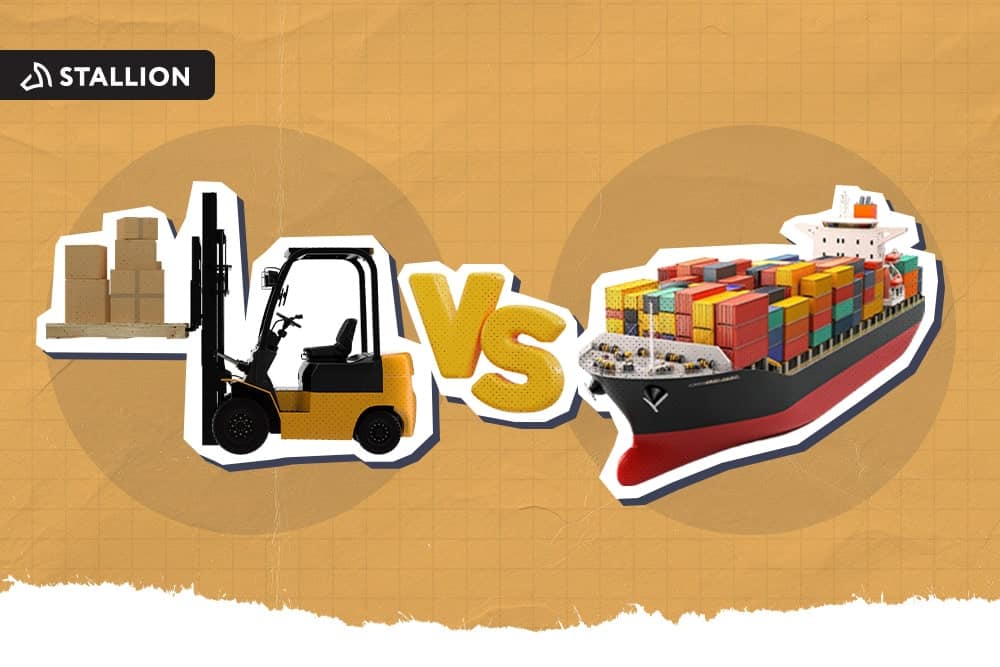
U.S.-based online sellers don't have to cross between oceans to begin expanding their business internationally. All they need to do is cross a border going to Canada to set the stage for transboundary e-commerce growth. Luckily, the infrastructure is already laid out, considering the centuries-old trade relationship between the two nations. There is no shortage of border shipping services to support global expansion.
This article will guide you through Canada border shipping services, the reasons why it is lucrative to start in Canada for e-commerce international efforts, and factors to consider when shipping goods from the U.S. to Canada.
In terms of strategic location, the length of the International Boundary line of the US-Canadian border (excluding Alaska) is around 3,987 miles, according to the US Geological Survey (USGS). Twelve U.S. states share international boundaries with Canada, including Michigan, Maine, Minnesota, Montana, New York, Washington, North Dakota, Ohio, Vermont, New Hampshire, Idaho, and Pennsylvania, based on the data from the International Boundary Commission. This means there are several ways to ship goods, especially to key states of the U.S. such as New York, Montana, and Washington.
Moreover, Canada is one of the four countries with the highest cross-border online shopper penetration, as stated in the P.R. Newswire report. When you look at the numbers, there were 19.8 million online shoppers in Canada last 2018, and 5.21 million users are expected to add to that number by 2021, as stated in the International Trade Administration. For these reasons, you won't have a problem expanding globally since online shopping is a booming industry in Canada.
In this step, you must acquire a Business Number (BN) in Canada and Employee Identification Number (EIN) in the U.S. You can get these from the Canada Revenue Agency and Internal Revenue Service, respectively.
Once you get hold of these I.D.s, identify the tariff classification by gathering the product composition details, descriptive literature, and product samples. You will use this information in the next step. Then, determine where your goods originate, starting from where you get the individual parts of the product and where it is assembled.
It will help you a lot if you hire a Canadian and American customs brokers that will take care of your shipment documents, pay any applied duties, respond to customs concerns, etc. They will also help you to obtain permits in selling goods that fall within these categories:
Since you've gathered what you need to classify your products in step no. 1, you can now search for the tariff classification number. It will help you estimate how much you will pay for duties when importing. Keep in mind that Canada and the U.S. have the Harmonized System or the "H.S. code," which refers to the classification number.
Besides the tariff classification number, prepare necessary customs documentation such as the Bill of Lading, Canada Customs Invoice (CCI), andCommercial Invoice (CI).
Now that you've identified the tariff classification number, the next step is to estimate your duties and taxes.
Let us tackle the duties first. This will depend on the type of goods and where they are made. You may reduce duty rates under NAFTA (North American Free Trade Agreement) by determining the tariff treatment, such as the Most Favored Nation (MFN), General Tariff (GT), General Preferential Tariff (GPT), and the NAFTA United States Tariff (UST).
After estimating the duties, compute the goods and services tax (GST) that will be collected by the Canadian federal government, and if you're delivering to Canadian provinces, figure out how much the provincial sales tax (PST) is. However, if you're shipping in Newfoundland, Nova Scotia, New Brunswick, Ontario, and Prince Edward Island, research on the Harmonized sales tax or HST. In Quebec, they call it QST or Quebec sales tax, and RST or retail sales tax in Manitoba.
It is time to choose the best courier to ship your goods. At this stage, you are deciding which shipping service is cheapest and making sure that it is a bonded carrier.
Given that it is only cross-border shipping, it is logical to choose ground service shipping. What is ground service shipping? As defined by USA Today, it is a "freight transport of tangible goods by land ("ground"), whether by train or truck.”
On the other hand, why should you work with a bonded carrier? You don't have to wait at the border to get an entry number, and it can enter Canada or the US from any service point. According to Legacy Permits, a bonded carrier can deliver goods without customs release and move goods "in transit" through Canada, where a release by CBSA (Canada Border Services Agency) is not required.
Whether you've found a bonded carrier or not, you must have a complete customs clearance on hand. Gather and organize all invoices with detailed information. Label and mark each package that corresponds with the invoice. Ensure that the country of origin is visible in the packaging. Provide a detailed description of each item in the package. It would be better if you let an authorized customs broker handle all of these legal matters.
Record-keeping is a required step since the customs documents will be audited six years following the shipment. As stated in the Government of Canada website, in retention of information, also known as keeping records, you:
“...should retain copies of all documents for their records, as these documents and any other evidence of export are subject to audit and must be retained for verification purposes.”
Since Canada consists of remote regions, you must expect that delivering orders is more complicated and expensive. Study the cross-border customs, duties, and trade policies of Canada to avoid any problems.
Here are the stats you should keep in mind when selling to Canadians, based on the 2020 Canadian Online Shopper report* from CanadiansInternet:
*Note: 5,000 Canadians were surveyed in this report
In addition to the stats above, make sure that your prices are converted to Canadian dollars. They also prefer shopping on an e-commerce website or product page in both English and French for Quebec customers.
Ask your courier if their trucks or commercial vehicles are equipped with electronic logging devices. Canada adopted this practice in December 2019, which applies to trucks that weigh more than 10,000 lbs. with the model year not earlier than year 2000.
We hope that this guide will help you to achieve your business goal of expanding internationally. Just make sure all your documentation is organized and correct to avoid getting held by customs, which may jeopardize your shipment schedule. Better yet, hire an experienced customs broker who will take the weight off your shoulders so you can focus on more important matters like selling and marketing your products. You may also seek help from a shipping and logistics solutions company that offers border shipping services.
You don't have to look anywhere else because Stallion Express provides top-notch border shipping services customized depending on your preferences. For inquiries, you can call +1 877-863-7447 or email [email protected].

Candy Rada is a dedicated professional with tons of experience in content writing for the shipping industry. As a literature degree holder, she excels in creating engaging content with strategies that enhance brand visibility. She enjoys playing with her cats, reading dystopian books, and joining trivia games in her free time.



Can our fellow Torontonians relate?
-
#smallbusiness #business #entrepreneur #socialmedia #shipping #ecommerce #canadianecommerce #shopify #poshmark #b2b #saas #etsy #ebay #canada #canadiansmallbusiness #shoplocalcanada #entrepreneur
#toronto

Here’s your quick hassle free shipping from 🇨🇦 to 🇺🇸 as a business owner!
-
Any questions?! Leave them 👇🏻 and save this video so you don’t forget!
-
#smallbusiness #business #entrepreneur #socialmedia #shipping #ecommerce #canadianecommerce #shopify #poshmark #b2b #saas #etsy #ebay #canada #canadiansmallbusiness #shoplocalcanada #entrepreneur

Meet @drinkbenny a 🇨🇦 female founded energy drink brand! Instead of focusing on their products, they’re taking a unique approach by hosting in person events in different Canadian cities to offer an experience for their community 🧡
-
What are your thoughts on in person events? 💭
-
#smallbusiness #business #entrepreneur #socialmedia #shipping #ecommerce #canadianecommerce #shopify #poshmark #b2b #saas #etsy #ebay #canada #canadiansmallbusiness #shoplocalcanada #entrepreneur

Do you know the difference between DDU and DDP when shipping internationally 🌏 ?
-
Questions? Leave them below! 👇🏻
-
#smallbusiness #business #entrepreneur #socialmedia #shipping #ecommerce #canadianecommerce #shopify #poshmark #b2b #saas #etsy #ebay #canada #canadiansmallbusiness #shoplocalcanada #entrepreneur

Here’s a quick hack to save time from choosing multiple postage options
↪️ Turn on the lowest postage rate automation to save you time!
-
Questions? Leave them below! 👇🏻
-
#smallbusiness #business #entrepreneur #socialmedia #shipping #ecommerce #canadianecommerce #shopify #poshmark #b2b #saas #etsy #ebay #canada #canadiansmallbusiness #shoplocalcanada #entrepreneur
